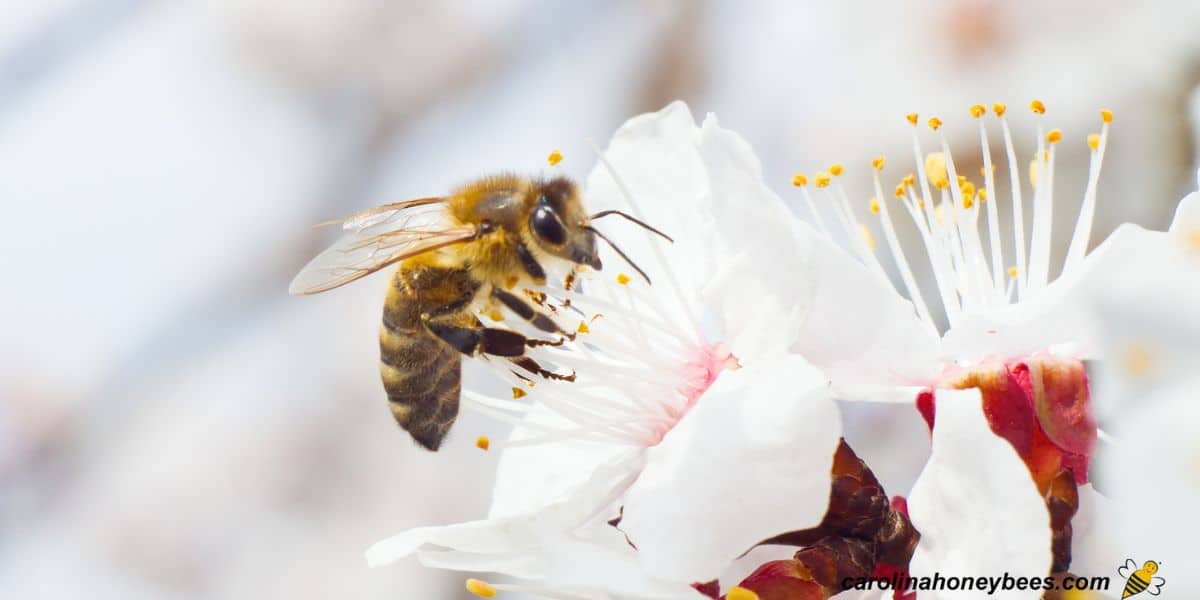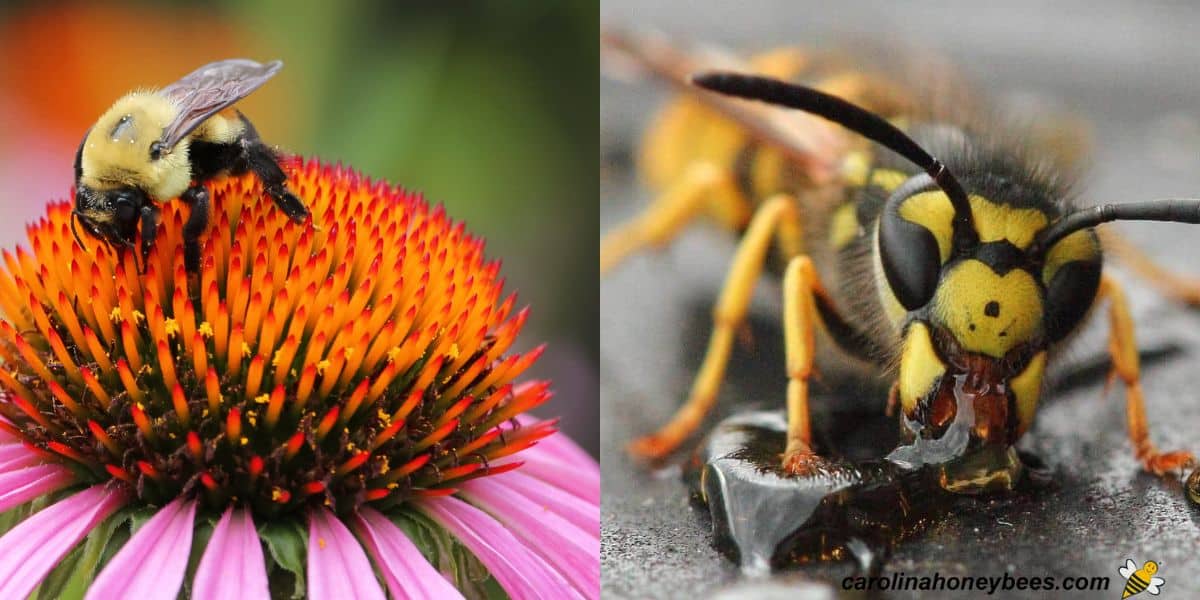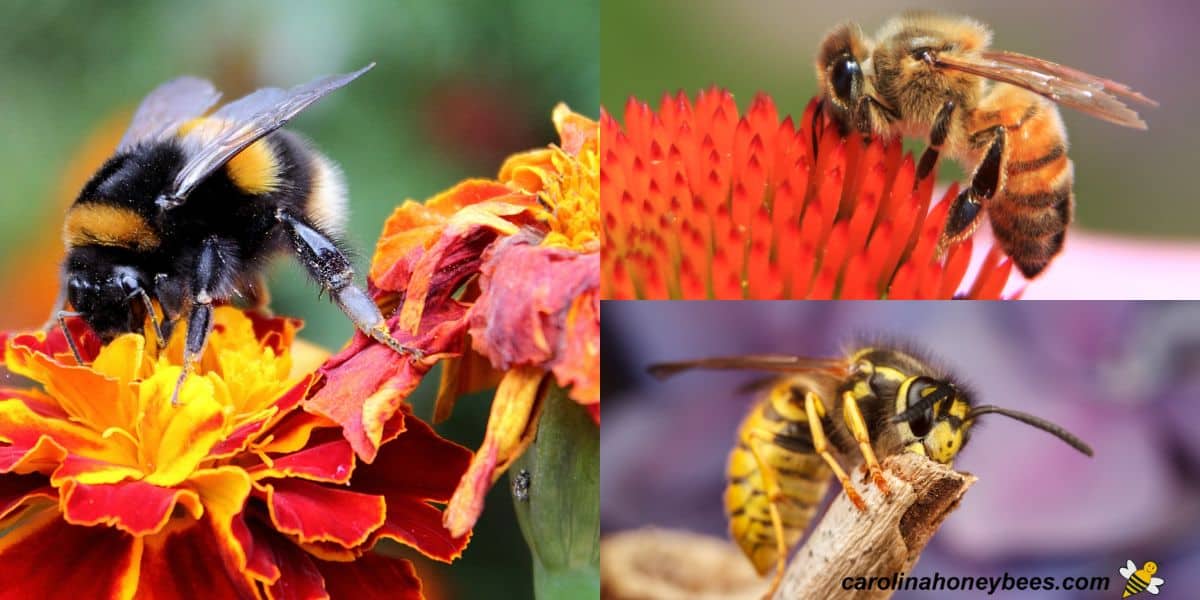When do Bees Come Out?
As winter fades and the temperatures warm, bees will once again emerge from their hives and nests. But, when do bees come out? Honey bees, wasps and other insects have different over-wintering strategies. However, all depend on warmer temperatures to resume foraging and colony growth. In this article, we will explore-when bees are most commonly seen in the spring, their peak activity times during the day and year, and how the start of “bee season” impacts beekeepers.

I am a beekeeper so of course I am most family with honey bees. But, please remember that the word “bees” covers a wide variety of insect life -each one has its own natural habitat and way of life. Even among true bees, such as honey bees vs bumble bees you will find lifestyle and foraging differences.
When Bees Come Out in Spring
The timing of a bee’s first spring flight depends on several factors, including species, climate, and food availability. One of the biggest influences, however, is temperature and weather conditions.
The warmer southern states will see more bee activity a couple of months before colder northern states.

Temperature and Weather
Honey bees are cold blooded insects. In fact, most bees are ectothermic. Their body needs warm external temperatures in order to perform well.
Few bees can fly and forage with temperatures are below 50°F (10°C). Honey bees need even warmer temperatures to fly comfortably.
Warm days with light winds will bring more bees out in the world. Likewise, cool days and rainy weather will delay the appearance of your bee friends. They will wait until conditions are better for nest building, etc.
Food Availability
Bees depend on many Spring flowers that provide nectar and important pollen. Pollen is a protein used for raising young. Honey bees store pollen as bee bread in the hive but all bees will collect early Spring pollen.
For the insects that are starting new nests from scratch, they will certainly need to visit flowers like dandelions, willows etc. Dandelions provide bees with important nectar and pollen very early in the season.

Differences for Honey Bees, Bumble Bees & Wasps
The actual calendar date of “bee season” changes a bit due to the region where you live and the specific insect in question. Some insects are more cold hardy than others and will fly in cooler temperatures.
Though many share a common seasonal pattern – the exact timing of their appearance depends on their over-wintering strategy.
Honey Bees – Honey bees survive Winter as a group inside the hive. They do not hibernate. When daytime temperatures rise above 55°F (13°C), worker bees will leave the hive to forage for nectar and pollen.
Bumble Bees – Bumble bees do not overwinter as a large family (like honey bees.) Instead, a mated queen hibernates alone in garden debris, under tree bark or in underground burrows. When temperatures start to warm, the queen will emerge and search for food and nesting sites.
Wasps & Yellow Jackets – Wasps and Yellow Jackets share some similarities with Bumble bees. Only fertilized queen overwinter – the rest of the colony dies. As the weather warms, the queen begin to build new nests and to raise the first generation of workers.
While wasps are not (true bees), they are often referred to as such. And being insects, they too share some common behaviors in reference to temperature.
Most Active Time of Year for Insects
Most bee species and other insects are active by the month of April – Spring. The daytime temperatures (are least some days) are warm enough to allow flight.
There will also be some plants starting to bloom. If you have flowers that bees love in your yard, you are likely to see some visitors on warm afternoons.
However, most foraging bees do not work outside on cool rainy days and the Spring season tends to have some of those.
While the time of year influences bee activity, so does the time of day. Bees follow daily patterns that align with warmth and nectar availability.
Even if the temperatures are not too low, the effort of flying and gathering food is not worth it. Imagine how large a falling raindrop must seem to a small bee.
This is true for windy days as well. Honey bees have a special part of their anatomy to gauge wind speed – their antenna.
But, if the wind becomes too strong, they stay home and rest – perhaps bees sleep – a little bee nap.
Most Active Time of Day
You will find that insects are most active around mid-day to late afternoon. This is the warmest part of the day and when most flowers have produced their nectar.
As evening approaches, foragers will begin to assemble back at the hive or nest. This is true for Yellow Jacket Wasps as well, most return to the nest at night.
In fact, late evening is a good time to observe an area if you think a nest might be present. Those yellow bodies coming in for the night are easier to see.
First Appearance: Bees and Wasps Emerge
Winter is typically a quieter time for bees. But, the colder months of the year are not completely devoid of insect activity.
Some bees will be out looking for resources on warmer days – if only for a few hours. Their ability to appear early in the year depends on species and local climate conditions.

Foraging in Cooler Temperatures
Depending on where you live, you may see a few Bumble bees as early as mid-March. They can forage in air temperatures a bit below 50° F.
Yellow Jacket Wasp queen begins to forage and build a nest sometime during the month of April. One difference between honey bees and yellow jacket wasps, is that the wasps forage in cooler temps – earlier in the morning and later in the day.
These underground nests are very small at first. You may not notice the nest until late Summer. That is the time when the nests become very large and are a hindrance to people and animals.
For this reason, some homeowners buy traps or build their own yellow jacket traps to try to capture the queens early in the season.

Bee Season for Beekeepers
Honey bees live in large social families called colonies. Their home is often called a beehive. Managed colonies are taken care of by beekeepers.
If you are a beekeeper, you have a true “bee season” during which you manage your colonies. This generally lasts from February-October.
In early Spring, beekeepers work to prepare the hives for the time of abundant nectar – a honey flow.
We watch for honey bee swarms. Most beekeepers try to limit swarming behavior – they would rather their hives make honey.
Some people think that honey is harvested all year but this is not the case in most locations. Honey harvesting is a Summer project that rewards a good season.
As the warm months draw to an end, beekeepers must do the necessary tasks to winterize their beehives.
As beekeepers wrap up their seasonal tasks, the bees themselves are also transitioning. Fall marks an important shift as colonies prepare for the colder months ahead.
Transitioning into the Inactive Season
As Fall transitions into Winter, bees and other insects will be getting ready for winter. Those that hibernate (Bumble bees/wasps) are busy insuring that queens are well mated and ready for Winter.
They will be responsible for starting a new family next year – remaining mostly inactive until then. On a warmish Winter day, the bumble bee queen may nourish herself on a Winter blooming flower.
Honey bees spend the Fall storing honey and pollen inside the hive. Colony population will slowly drop as bees “hunker down” to survive Winter. Winter beekeeping tasks are much less the time of year.
Be Ready for Bees to Appear
Not everyone is a big fan of stinging insects, that’s okay. Perhaps you have a full blown case of apiphobia or severe fear? Or, you may just not want to get too up-close and personal with a honey bee or wasp.
That’s cool. You can still share the world with these beneficial insects. You don’t have to avoid having pretty flowers in the yard.
Choose an area of the garden for plants that repel bees or at least are not attracting more into the area.
And yes, sometimes for public safety you may need to employ some tactics to keep bees away. Either way, you don’t have to spend the whole summer locked up inside the house.
FAQs
Bees are very active during the seasons of Spring, Summer and Fall. The actual calendar months varies due to your climate.
Most bees use the outside temperature as a guide for when it is safe to forage outside. As temps rise from the upper 50’s to about 60, bee activity increases.
No, honey bees do not hibernate. They cluster together as a mass and stay inside the hive living off the honey they have stored.
Final Thoughts
While we may not always see bees active in our daily lives, they are out there. Whether busy working in the hive or waiting for next year under a layer of garden debris – bee life continues. At the proper time of year for the specific species, bees will come out and begin anew.
Additional Resources
- Seasonal Insects – Arizona University
- National Geographic Insects

